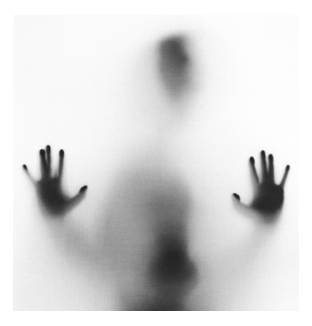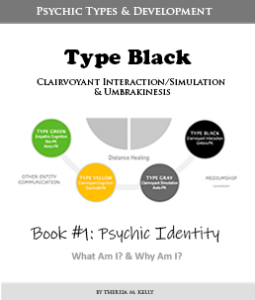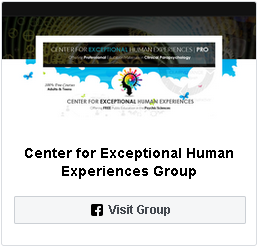- What Am I? (Type Black)
- Psychic Ability (Type Black)
- Dreams Impressions & Hallucinations (Type Black)
- Clairvoyant Interaction (Type Black)
- Trance Mediumship (Type Black)
- Channeling (Type Black)
- Physical Mediumship (Type Black)
- Clairvoyant Simulation (Type Black)
- Input CS (Type Black)
- Output – Probability Shifting (Type Black)
- Output- Historical Shifting (Type Black)
- Changing The Past (Type Black)
- Intention (Type Black)
- Intention #2 (Type Black)
- Adaptive or Directive? (Type Black)
- Adaptive or Decisive? (Type Black)
- Input or Output? (Type Black)
- Trance Mediumship or Channeling? (Type Black)
- Your Sources (Type Black)
- People, Places, Objects & Ideas (Type Black)
- People, Objects & Events (Type Black)
- Precognition & Probability Shifting (Type Black)
- Contemporaneous Input & Real-Time (Type Black)
- Postcognition & Historical Shifting (Type Black)
- Episodes (Type Black)
- Experience Modes (Type Black)
- Other Terms for CI and CS (Type Black)
- You Are Not Alone: CS & CI (Type Black)
- Magical Thinking & Psychic Confusion (Type Black)
- The Difference Between Types of ESP (Type Black)
- The Difference Between Types of ESP II (Type Black)
- Seriously? (Type Black)
- Having Doubts: CS & CI (Type Black)
- Psychokinesis (Type Black)
- Forms of Psychokinesis (Type Black)
- PK or CS Healer? (Type Black)
- Science Crash Course (Type Black)
- Umbrakinesis (Type Black)
- Umbra-PK Subtypes (Type Black)
- Umbrakinesis Part II (Type Black)
- Normal or Paranormal? (Type Black)
- Light or Thermal Healer? (Type Black)
- Umbra-PK & Physical Mediums (Type Black)
- Did You Know You Are Not Alone? (Type Black)
- Having Doubts? (Type Black)
- One Last Question (Type Black)
DIFFERENCE BETWEEN CI & OTHER ESP
In Clairvoyant Cognition, specifically Mental Mediumship, the information that the medium receives does not involve the spirit communicating from within the medium or taking over the physical body of the medium. Instead, the information received is only through the psychic senses as more of a phone call between the spirit and medium rather than any form or feeling of embodiment or lack of self-control. With mental mediumship, the call or voice of the spirit may sound like the spirt is outside of the medium or within the mind of the medium, but there is no feeling of the spirit’s physical presence within the medium. The spirit is one place and the medium is in another.
 Obsession experiences are similar to physical mediumship but in this case, it is only one spirit that is around and trying to communicate with the living person and this spirit tends to stick around for a long period of time, such as weeks, months, and even years. This spirit may stick with the living person as they move about their day-to-day life or the spirit may be stuck to the home in which the living person lives.
Obsession experiences are similar to physical mediumship but in this case, it is only one spirit that is around and trying to communicate with the living person and this spirit tends to stick around for a long period of time, such as weeks, months, and even years. This spirit may stick with the living person as they move about their day-to-day life or the spirit may be stuck to the home in which the living person lives.
 With obsession experiences, if the spirit shows itself (manifests itself) speaks or creates noises or the movement of physical objects, other people can see and hear these effects as well at the person the spirit is obsessed with. If this person has any capability of physical mediumship, known or unknown to them, they may be the reason the spirit can be so physically active at times. These spirits are typically strangers to the living person, not deceased loved ones.
With obsession experiences, if the spirit shows itself (manifests itself) speaks or creates noises or the movement of physical objects, other people can see and hear these effects as well at the person the spirit is obsessed with. If this person has any capability of physical mediumship, known or unknown to them, they may be the reason the spirit can be so physically active at times. These spirits are typically strangers to the living person, not deceased loved ones.
To sum it all up, obsession experiences are when a living person is haunted by a single spirit, while physical mediums work with many spirits over time that come and go.
 Those with Psychokinesis may experience seemingly paranormal physical activity that they may assume to be the result of spirit activity, but rather it is their own psychokinetic ability that is doing all the work with no spirit of any kind being involved. This is very common in reported hauntings where random noises are thought to be the communication of a spirit, but it is simply the psychokinetic experiencer creating random events often due to STRESS.
Those with Psychokinesis may experience seemingly paranormal physical activity that they may assume to be the result of spirit activity, but rather it is their own psychokinetic ability that is doing all the work with no spirit of any kind being involved. This is very common in reported hauntings where random noises are thought to be the communication of a spirit, but it is simply the psychokinetic experiencer creating random events often due to STRESS.
With psychokinesis, there will be no evidence that there is an intelligent spirit or entity involved during the physical influence of objects or the environment around them.
Real spirit activity reacts to living people while psychokinesis is purely random and will not present in a way that seems like a spirt is trying to respond or answer questions.
 If activity is best described as random noises, rapping, knocking, movement of objects, or the sudden presence of heat or light with no known source, then what is being experienced will more likely be psychokinesis rather than spirit activity.
If activity is best described as random noises, rapping, knocking, movement of objects, or the sudden presence of heat or light with no known source, then what is being experienced will more likely be psychokinesis rather than spirit activity.
Apparition Activity is a type of paranormal activity where an experiencer may see a ghostly image that may also be seen by other people. This ghostly image is usually of a deceased person but can also be the image of a living person that is currently in a crisis somewhere else. In the case of a living person, this person has a strong need for them to be seen by the experiencer. This type of apparition is often called astral projection.
Apparition activity can also include other forms of sensation other than just seeing ghostly images of people or animals (living or deceased), but also non-living objects.
In the case of seeing the ghostly image of a deceased person, physical mediumship may or may not be involved.
If the image has been seen by many other people over time, such as a long history of appearances, then physical mediumship is less likely to be involved.
In these cases, the ghostly image could be what’s called an ANNIVERSARY GHOST, which appears at the same time each year to whoever is there to witness it and is open to the experience.
 Poltergeist Activity can seem similar to physical mediumship experiences, but in this case, the effects are limited to one location. This can be a location such as a home, a building, a graveyard, and so on.
Poltergeist Activity can seem similar to physical mediumship experiences, but in this case, the effects are limited to one location. This can be a location such as a home, a building, a graveyard, and so on.
This experience can include the movement of objects by the poltergeist such as the throwing of objects, the displacement, disappearance, or appearance of objects such as a p p o r t a t i o n, noises, voices, the sensation or physical markings from something biting, pushing, or pinching, the presence of unexplainable stains such as blood, the unexplained appearance of religious words, symbols, sigils, seals, or images, or lastly, electronic phenomena or disturbances such as lights flickering and power outages.
However, if these characteristics are present and appear to be directed towards the experiencer rather than a location, such as when an experiencer moves to another home and the entity follows, this could be a case of poltergeist obsession.









